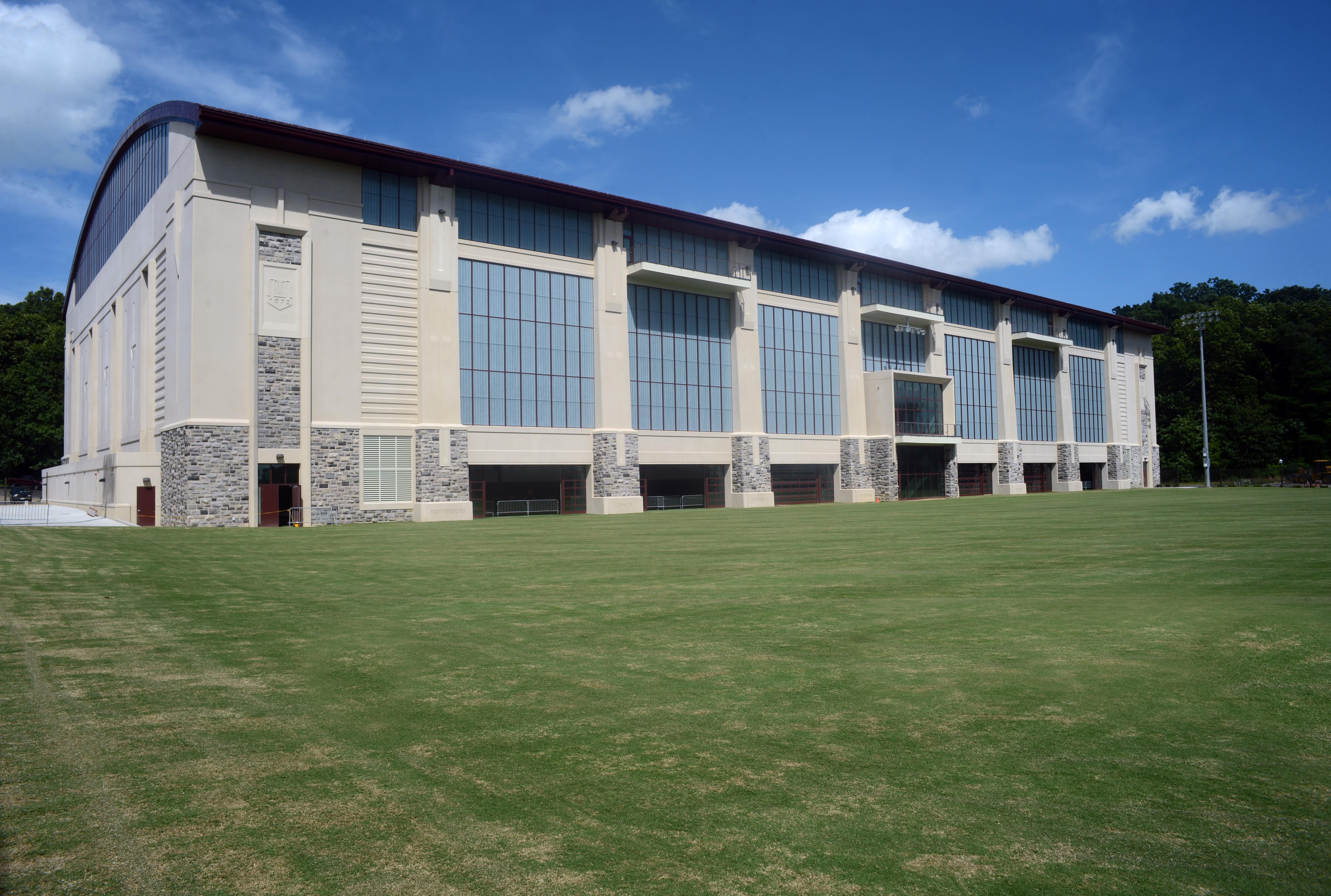New Indoor Practice Facility dedicated

Virginia Tech recently celebrated the opening of its 92,000-square-foot Indoor Practice Facility, the largest of its kind in the nation, at a ceremony that highlighted philanthropy’s role in the $21.3 million project.
Hours before the Hokies’ football season began with a prime-time contest against defending champion Ohio State, university leaders and numerous alumni and friends who played key roles in the practice-facility project’s success gathered at the new building.
Sandra Davis of Blacksburg, whose gift toward the project in memory of her late husband, Patrick Cupp, led to the naming of the facility’s field in his honor, spoke on behalf of the building's many donors.
“Our stellar athletic programs are a source of tremendous pride throughout our region – and for our alumni throughout the world,” she said. “And the exposure that athletics brings is being leveraged in so many powerful ways, to benefit all areas of Virginia Tech.”
The naming of the Patrick D. Cupp Field was one of multiple major gifts toward the project that led to prominent spaces being named in or around the facility.
Others include the naming of the access road to the facility and the facility’s entrance for donors Win Sheridan and Brian Callaghan, and the naming of each of eight columns around the building.
The columns were designed to reference the iconic Pylons at the university’s War Memorial Court, and like the Pylons each has etched onto it one of the university’s core values: brotherhood, honor, leadership, sacrifice, service, loyalty, duty, and Ut Prosim (the university’s motto, Latin for That I May Serve).
Donors who have named columns are Ray T. Avery Jr., the Andrews family (C.E., Jean, Mary Beth, Chas, and Alex), Paul and Allison Lombardi, Jim and Debbie Petrine, the Stuart Plank family, Chuck Rector, Nicholas and Fay Street, and Carl and Lynn Verboncoeur.
“Our motto … is much more than a saying, or something we engrave on a wall – it really is a way of life – for our faculty, staff, students, alumni, and friends,” Virginia Tech President Timothy D. Sands said. “The Indoor Practice Facility is just one example of that Ut Prosim spirit. Our generous donors have shown their commitment to Virginia Tech’s future student-athletes through their donations that made this building possible.”
The Indoor Practice Facility is 210 feet wide, 400 feet long, and has a ceiling height of over 86 feet – high enough for kicking and punting practice. The Department of Athletics plans to use it for more than just football practice. Other sports, including men’s and women’s soccer, softball, baseball, and lacrosse will use the building for training and conditioning, and the building’s presence is expected to help with recruiting for all sports.
“Just looking at the facility, you can see the commitment the university and its donors have to our athletic department,” said Whit Babcock, the university’s director of athletics. “Prospective students are impressed by this commitment and will want to become part of the Hokie nation.”
Davis cited her late husband’s passion for Hokie football as one reason she was inspired to make a major gift toward the project, but also said that by helping Hokie sports she saw herself as helping the university overall.
“Athletics helps a broader range of people recognize Virginia Tech and associate it with excellence than might otherwise be the case,” she said.
Patrick Cupp, a member of the Class of 1962, earned his degree in sociology and went on to a successful career in real estate. He died in 2000.
“His education played a major role in his success in business,” Davis said. “He delighted in watching our players win games. He also loved hearing from fellow alumni about how their experiences at Virginia Tech had prepared them to lead fulfilling, productive lives.”






.jpg.transform/m-medium/image.jpg)
